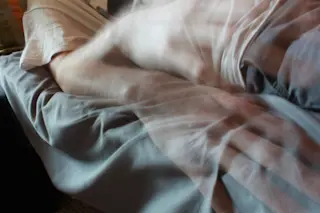Researchers have discovered that it's simple to trigger the illusion of body swapping: All it takes are some goggles, live-streaming video, and a bit of a belly rub.
Spooky as it sounds, neuroscientists ... were able to use simple camera trickery to fool volunteers into perceiving the bodies of both mannequins and other people as their own [New Scientist].
In an article published in the journal PLoS ONE researchers describe an experiment in which the volunteer put on a pair of high-tech goggles and was told to look down.
At the same time, video was beamed into the glasses' displays from a camera attached to the head of a mannequin. In short, the study participant was looking in the direction of his or her own stomach, but actually seeing the stomach of the mannequin. At that moment, the person conducting the experiment would rub both the stomach of the mannequin ...













